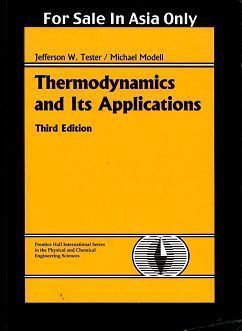書籍分類

Thermodynamics and Its Applications 3/e
作者:Jefferson W. Tester, Michael Modell
原價:NT$ 1,200
ISBN:9789861540009
版次:3
年份:1997
出版商:Pearson Education
頁數/規格:960頁/平裝單色
版次:3
年份:1997
出版商:Pearson Education
頁數/規格:960頁/平裝單色
內容介紹 本書特色 目錄
- Description
Rigorous and comprehensive in approach, this text explores the theory, concepts and applications of classical thermodynamics and introduces a molecular-level perspective of constitutive property models for both electrolyte and non-electrolyte mixtures. Extensive examples and problems provide ample opportunities for connecting theory with applications.
分類位置:
理工 > 機械工程 > 熱力學


